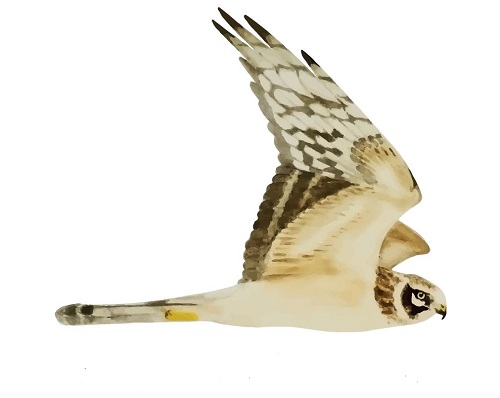Her på Skagen Fuglestations blog bringes korte nyheder i dagbogsformat om hændelser på fuglestationen.
Se indlæg fra måned: feb. (11)mar. (31)apr. (30)maj (31)juni (30)juli (31)aug. (31)sept. (30)okt. (31)nov. (30)dec. (6)
Goodbye From a Tornsanger
This morning was my last morning opening nets for the Skagen Fugelstation this summer, and as usual we were greeted with a beautiful sunrise and several mosquitoes. As I walked down the same winding paths I walked countless times this summer, I thought of everything I learned, my colleagues who helped me, Esben and Martina who trained me, and of the many birds I extracted, bagged, and rung. I find that it's easy to get caught up on all the things you need to improve on, that you ignore the progress you are making and on that early morning net check it all came flooding back to me. In 40 days I have met colleagues who have come and gone, different supervisors with different ways of closing mist nets, a member of parliament, countless photographers, all whom are interested in birds and in love with Skagen. The enthusiasm and breathtaking scenery that draws people to this location every year makes Skagen Fuglestation a unique place to work, and my time here has made me a little more curious, a little more skilled, and definitely a little more interesting.
The morning itself without nostaligia and introspection was much like earlier in the week. Martina and I opened the nets around 4 AM and we had a low number of birds in the first few rounds, but by the end we did manage to process 10 different species. One of the species we processed is one that is common to many, but uncommon in the nets and is the skovspurv ( tree sparrow), and it brought a smile to Martina’s face as it brought back memories of her early ringing days. But the last bird I rung was a perfect representation of my time at the ringing table this summer. Ater we closed the nets, I pulled out a fresh tornsanger out of a little red bird bag as I had done many times before. I don’t doubt I will come across other tornsangers in the future, but it was definitely the perfect way to say goodbye to KAB.
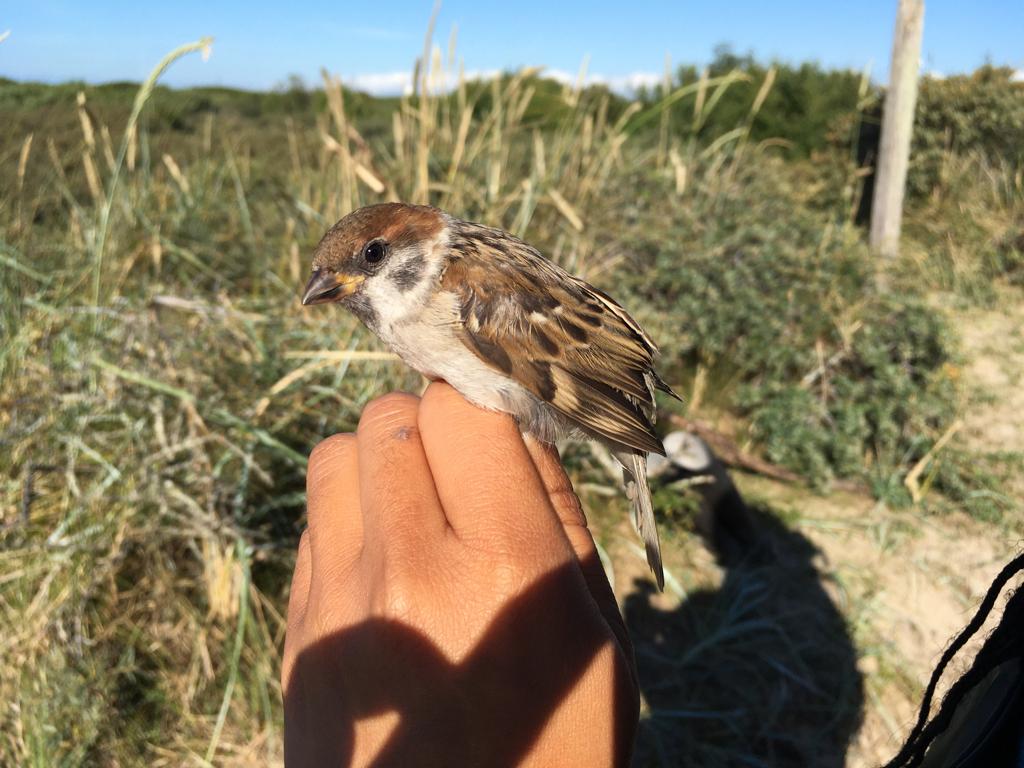
Skovspurv. Photo credit: Martina
My last night here is far from over, after a nice dinner at an Italian restaurant in downtown Skagen with the team, we all got ready for the long night ahead that will hopefully be filled with interesting birds including the sought-after storm petrel (Stormsvaler). Last night’s first attempt this summer to catch the small petrel with the aid of mist nets and a megaphones with playback was not fruitful, but the team remains hopeful. Check back tomorrow for updates on the night catching, and the activities of the Skagen Fugelstation team!
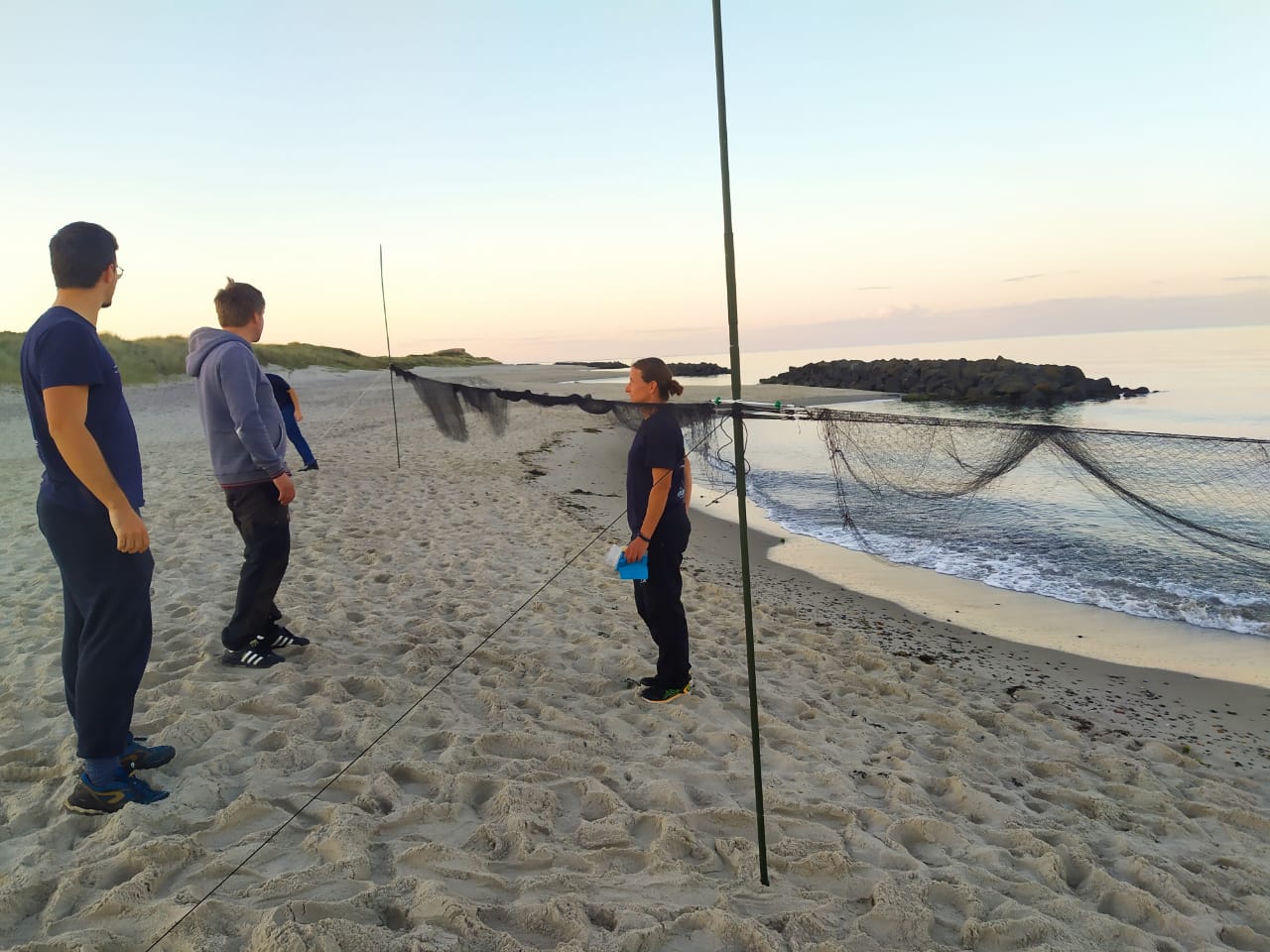
Nets on the beach near the lighthouse for nightcatching. Photo credit: Rita DeLucco
Thank you and Goodnight!
- Rita M. DeLucco
Solsort (Blackbird) 1
Gærdesanger (Lesser Whitethroat) 3
Tornsanger (common Whitethroat) 7
Munk (Blackcap) 3
Kærsanger (Marsh Warbler) 1
Rørsanger (Reed Warbler) 1
Gransanger (Chiffchaff) 1
Musvit (Great Tit) 1
Skovspurv (Tree Sparrow) 1
Gråsisken (Redpoll) 1
Total 20
Local observations of the day in DOFBasen
Summer weather
It has been one of the very few mornings with no clouds around here which makes the sunrise look completely different.
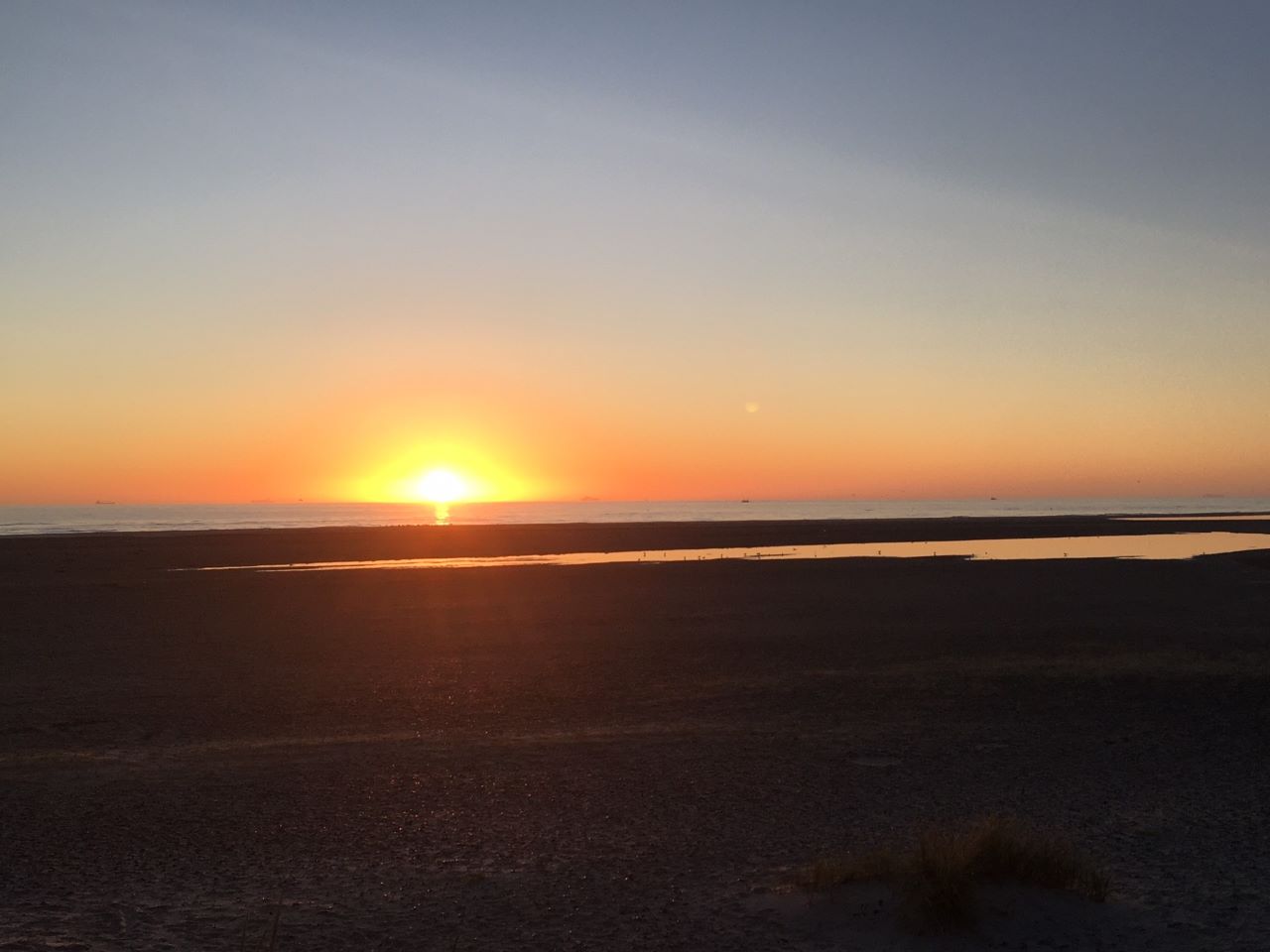
As we did the last few days, we split up and Max and I did the sea watch while Simon went ringing at Kabeltrommlen with Rita and Nathan. Both sites were quite slow and less eventful than the last days, however, the weather was considerably more enjoyable than earlier this week.
Goodies of the day were 3 bearded reedlings (skægmejse) at the ringing and the largest number yet counted of terns roosting on the beach (more than 600!).
Not a bird but a very special rarity was spotted by Simon also at Kabeltrommlen during the morning: Apatura iris (Iris). This butterfly has never been observed in Skagen before!
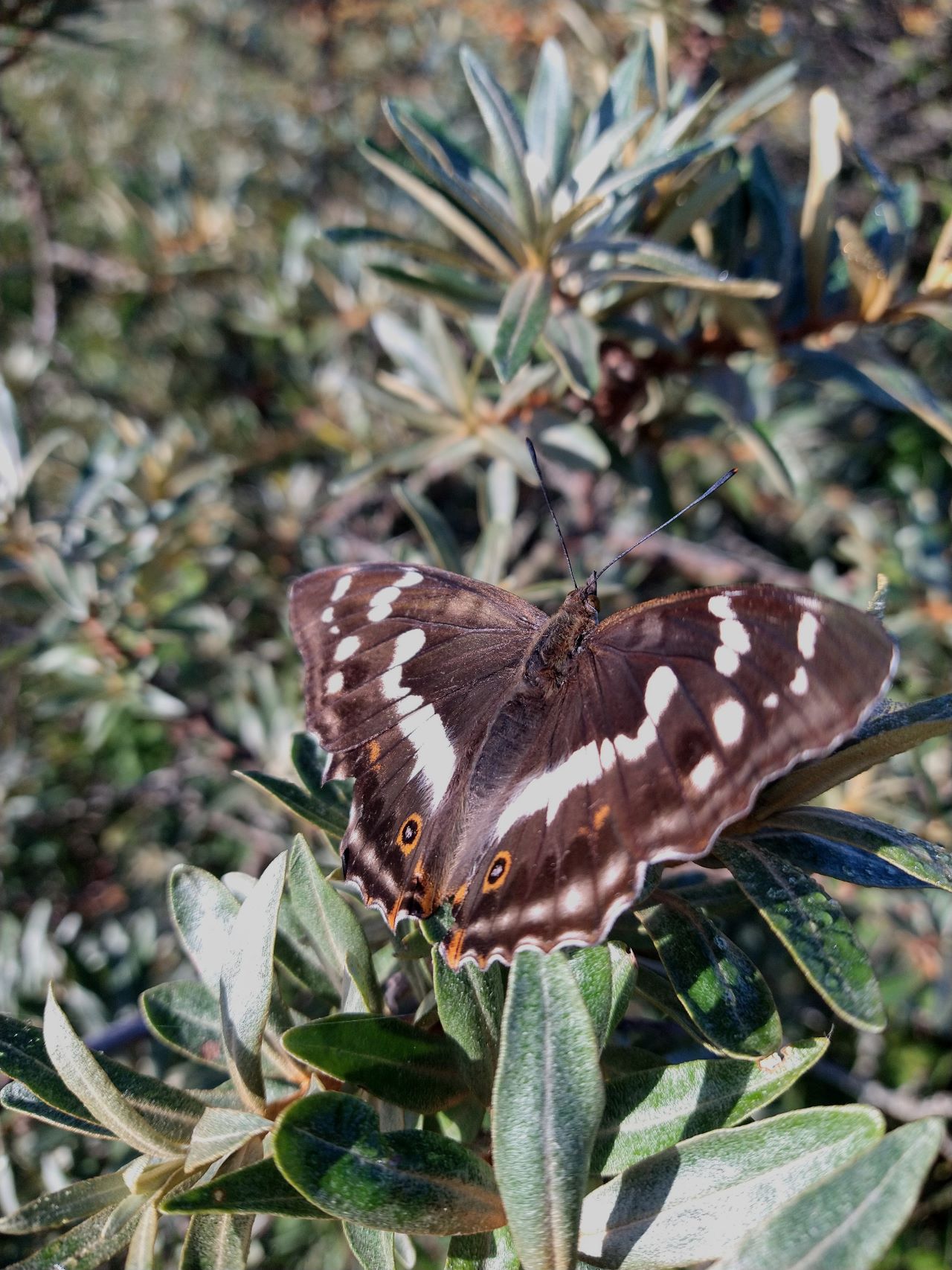
Photo by Alice who came out to "twitch" the butterfly!
An interesting situation occurred, when a common guillemot (lomvie) came to shore, probably because it is sick and needed to rest. This meant that it also allowed tourists to get really close to it and take pictures. People even called to say they found a little penguin! For future reference, if you find a bird that looks unhealthy around here, you can always call animal rescue at the phone number 1812 and they will tell you what to do or whether they can help the bird.
Tonight we will start a marathon of ringing day and night, hoping to catch storm petrels (stormsvale) at night which we want to establish a research project on in the future if we can get enough of them. This is a test run trying to see how best to catch these birds that normally spend almost al their life out in the sea and only come to land for breeding and even this is done mostly on islands far out at sea. One of the biggest breeding colonies can be found on the Faroe Islands, so technically, Denmark is a very good place for this species. Contrary to most birds, petrels have a very good sense of smell, which allows them not only to identify their partner but also to find food at night. Storm petrels are long distance migrants, but since they are so rarely spotted on land it is very hard to study their migration. We will see if we can help with that in the future. Wish us luck!
Ringing at Kabeltrommlen
Landsvale (Barn swallow) 1
Løvsanger (Willow Warbler) 2
Gransanger (Chiffchaff) 2
Tornsanger (Common Whitethroat) 6
Gærdesanger (Lesser Whitethroat) 1
Munk (Blackcap) 2
Skægmejse (Bearded Reedling) 3
Lille Gråsisken (Lesser Redpoll) 2
Rørspurv (Reed Bunting) 1
Total: 20
Local observations of the day in DOFBasen
People: Rita DeLucco, Nathan Delmas, Alice Scalzo, Max Laubstein, Martina Hillbrand, Knud Pedersen Simon S. Christiansen, and our guests Margit and Jesper.
Stockholm Syndrome
Hello everyone!
As has been the norm for the past few weeks, for today's fieldwork we split into two teams. Martina and I left for Kabeltromeln to go ringing at 4:00 am, and Rita and Nathan went to World's End 3 at Grenen to do the daily autumn migration seawatch. Brief rains in the first two hours of the ringing hampered bird activity, but when the rains stopped we managed to catch a good assortment of resident species such as song thrush (sangdrossel), blackbird (solsort), reed bunting (rørspurv), chaffinch (bogfinke), and a gorgeous lesser redpoll (lille gråsisken), as well as a few migrants, such as willow warbler (løvsanger). Interestingly, a high proportion of the birds today were recaptures, likely a result of us having ringed a decent number of this season's juveniles, and low rates of overnight migration. Alice and her mother, who is currently visiting Skagen, came by the ringing for the last few hours, and not long after their arrival, the day's unequivocal highlight flew into our nets. An after second calendar year (i.e., adult) reed warbler (rørsanger) is, on its own, no big surprise seeing that a lot of them breed around here. But closer inspection of the aluminium ring already fitted around its leg revealed an exciting 9-letter word: "STOCKHOLM."
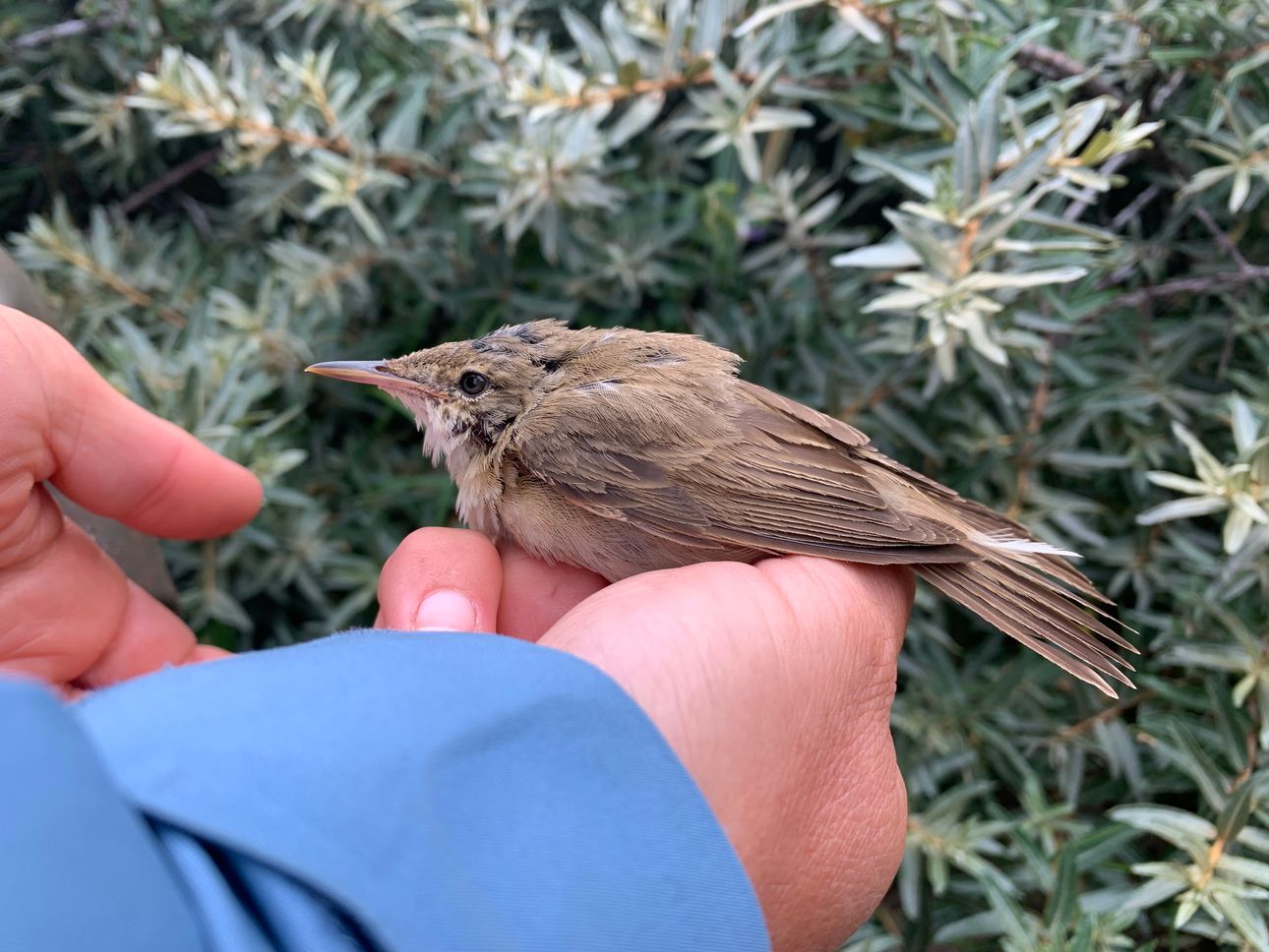
Recapture Rørsanger from Sweden
Reed warblers (rørsanger), Acrocephalus scirpaceus, are common breeding birds in the wetlands around Skagen. They are very hard to distinguish from their sister species marsh warbler (kærsanger) unless they are singing since their songs are very distinct. The physical appearance, however, it very similar so on migration when they are not singing it is always a challenge to distinguish the two species and even when you hold them in your hand it can be hard. Both migrate from Sweden through Denmark to West Africa. Marsh warblers migrate quite a bit further and therefore earlier. They also almost exclusively use the „Eastern Flyway“ crossing the Arabic peninsular on their way to Africa, whereas reed warblers stay in the north longer and mainly choose the „Western Flyway“ passing the Mediteranean at the Channel of Gibraltar. Since reed warblers are very common breeding birds in wetland areas and most bird ringing stations in Europe are set up in such habitats, reed warblers are also a common species to recapture. This means that we have very good information on how and when and where they migrate. There are recaptures of birds as long as 12 years after they were ringed, which is quite impressive considering the small size and the amount of travel such a bird conducts each year! All we know about the bird we caught today so far, is that it was not born this year. Who knows how many times this small animal has flown across the equator in its life. It is genuinely marvelous that a minute feathered creature brings tales of Afrotropical scrublands shared with hornbills, sunbirds, and zebra, to cold windswept dunes here in Skagen. With regards to this blog's corny title, its unlikely our Swedish-ring-wearing warbler friend felt any admiration for its temporary captors (us), but its political-border-oblivious story sure held us captive with affection. We will report the bird to the Swedish ringing center and hopefully soon know more about its biography.
All the while, Rita and Nathan had quite an exciting seawatch, reporting a Manx shearwater (Almindelig Skråpe) passing by close to shore, black terns (sortterne), and a great skua (storkjove) that landed on the beach for a while!
The rest of the day was spent resting, inputting data, and repairing nets. Tomorrow, we look forward to good migration conditions, which hopefully bring good birds into our nets and flying by the shore!
Chau
Max
Ringing Totals:
Common Chiffchaff (Gransanger): 4
Eurasian Reed Warbler (Rørsanger): 2
Lesser Whitethroat (Gærdesanger): 2
Icterine Warbler (Gulbug): 1
Willow Warbler (Løvesanger): 1
Reed Bunting (Rørspurv): 1
Common Whitethroat (Tornsanger): 1
Eurasian Blue Tit (Blåmejse): 2
Garden Warbler (Havesanger): 1
Eurasian Blackcap (Munk): 1
Common Chaffinch (Bogfinke): 1
Common Blackbird (Solsort): 1
Total: 18
Local observations of the day in DOFBasen
People: Rita DeLucco, Alice Scalzo, Nathan Delmas, Max Laubstein, Martina Hillbrand, Knud Pedersen, and our guests Margit and Jesper.
More Than a Breeze
Once upon a time in the early morning hours, foreign bird banders up at KAB asked a local birder if there was ever a time of year in Skagen with less wind, and the local smirked and said ‘’no, it’s always windy’’. Though it is always somewhat windy, the past couple mornings have been windier than usual and have kept us from opening our mist nets up at KAB. However, members of our team were able to conduct a migration and roost count at the tip. Around 4:30 AM armed with their scopes, binoculars, seats, and counters Alice and Max trekked through the sandy beach to the little dune overlooking the tip, the wide beach dotted with colorful pebbles, and the seas. Once at the top, they set up their scopes in the hopes of catching a glimpse of the expected migratory species that usually appear this time of year. In the first hour of observation, the team spotted two black terns, alongside the many herring gulls and common terns usually present on the beach. By 7AM the team accompanied by Knud spotted a couple exciting species including different types of skuas such as: great skuas, arctic skuas, and a long-tailed skua that stole the show.
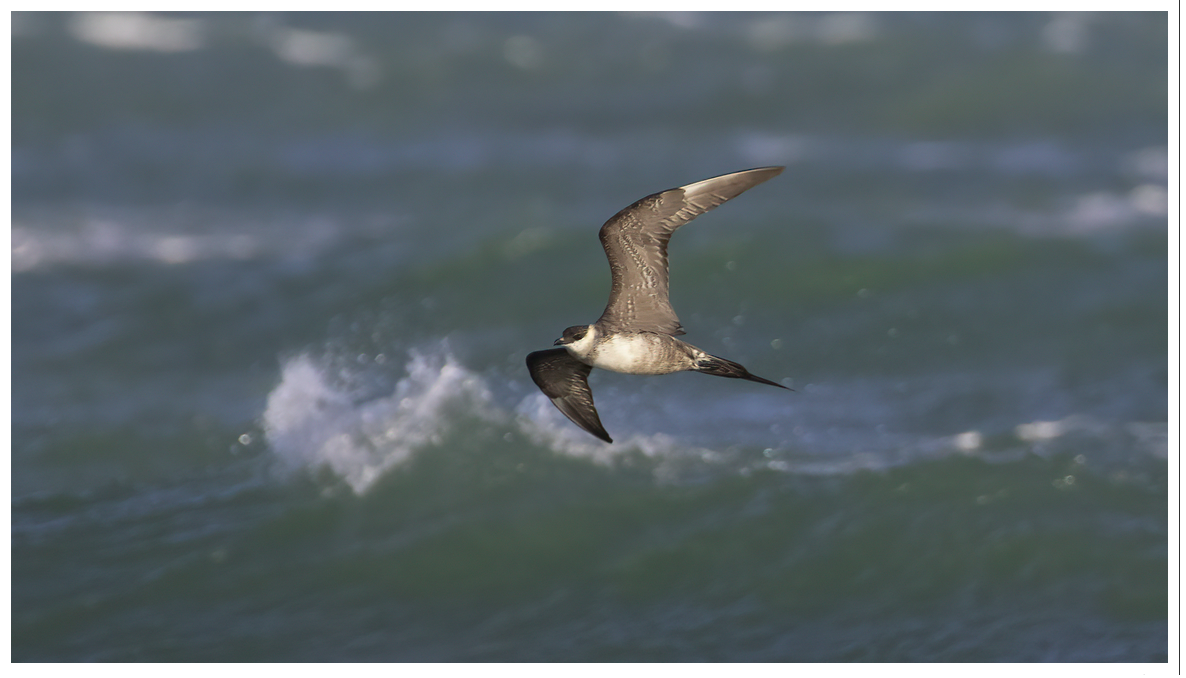
Long-Tailed Skua, Photo credit: Knud Pedersen
The morning observations ended at around 9AM after the routine 4 hour counting process, and Martina joined the group at the tip to attempt to resight some ringed gulls. With the aid of her scope she was able to get a good look at a couple different rings, but she soon started to feel the effects of the wind. As the wind started to pick up, the scope started to shake and as Martina held on and attempted to continue her work, the wind increased nearly toppling the scope. Unfortunately, the combination of strong winds, tourists enjoying the beach but often unintentionally flushing the birds cut Martina’s mission short, but fortunately she did not leave empty handed.
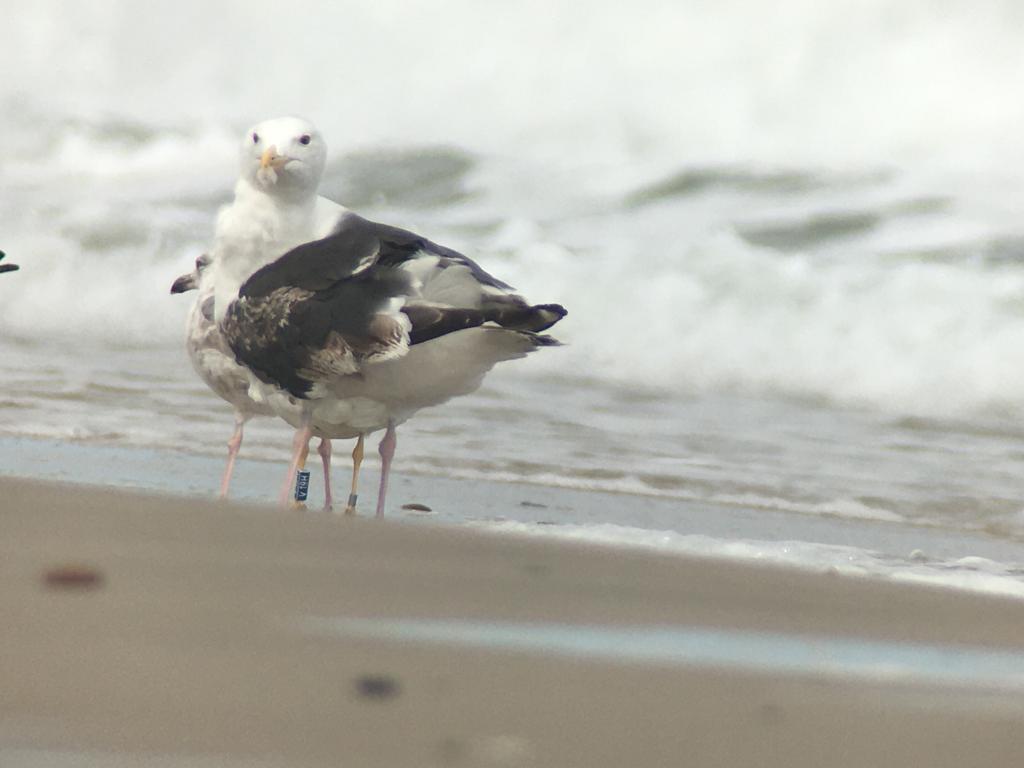
Martina spotted a gull spotting her with a scope. Photo credit: Martina Hillbrand
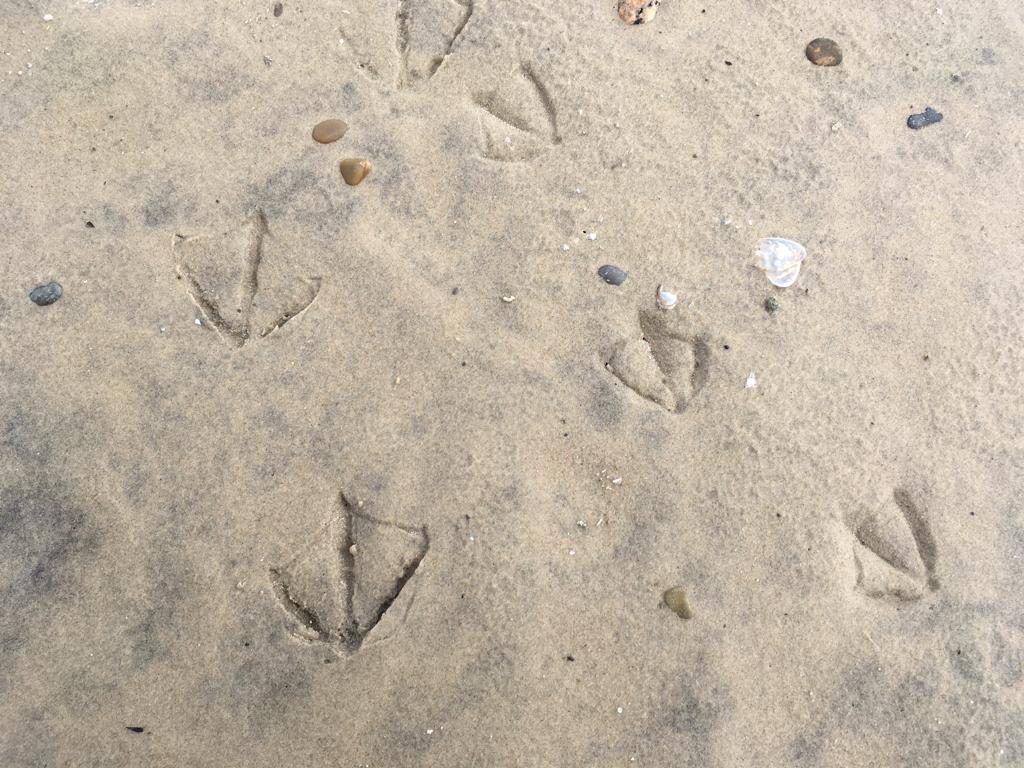
Size comparison: Great black-backed gull (Svartbag) on the left vs. lesser black-backed gull (Sildemåge) on the right. Photo Credit: Martina Hillbrand
The winds do not only affect our ability to open the mist nets, but also have an impact on migration depending on their direction and intensity. The effects of the wind can also been seen on the tourists attempting to walk to the tip, bikers biking to town at a snails pace, and on the sand as well as dunes near the beach. So, for all of those still out there braving the winds, cover up and hold on! Coz what’s Skagen without a little wind?
Local observations of the day in DOFBasen
People: Rita DeLucco, Alice Scalzo, Nathan Delmas, Max Laubstein, Martina Hillbrand, Knud Pedersen, and our guests Margit and Jesper.
Rain on the beach
The beach around here is always nice for bird watching, however, on days with so-called ‘bad’ weather it may be especially so. You never know which rarity a storm might wash to shore. So when it is stormy and rainy it is always good to go take a look at the beach. It is not quite as peasant, of course, as doing a bird count in the sunshine.
This morning started just after midnight for Max and me, since we had decided to try our luck with night catching. Rain at night should have made it possible, however, the forecasted rain didn’t come at the time it was forecasted, so visibility was too good and birds could get away from us. It was a good chance to get used to using the thermal binoculars, however.
After one hour of sleep, I got up again to check the weather forecast and contrary to what was expected last night, in the morning it seemed like most of the rain would pass just south of us. So I told Nathan an Rita that it was okay to try and do the count and myself went to open some nets in Grenen (not all of them since it was unclear if it was going to rain or not and I needed to be prepared and able to close quickly if necessary. That’s also what I did after an hour, as it already started to rain.
The forecast said it would stop after two hours, so I took my chance to check out the beach and saw a small flock of sanderlings next to a lot of roosting gulls and terns. When the rain stopped, I went to open the nets again because not only on shore but also inland a storm could have brought nice birds. And maybe it did, or it was just coincidence that just after the rain there were two rosefinches (karmindompap) in the net. One juvenile and an adult, possible a young and a parent travelling together.
Other than that, not a lot of birds have been called, although downscaled to the lower number of nets and hours the number of birds was comparable to the last few days. And the mix of species was similar too. Tomorrow winds will drastically change and the clouds between Norway and us will clear up so as to allow migration to finally get moving for real. It will probably be too windy tomorrow to find out, however, on Wednesday we will be prepared for larger numbers of birds again.
In the afternoon, our guests for this week arrived – a little later than usual because of illness. Also, we did some data entry while it was raining outside. While at work at the computer we also received some recovery data on birds ringed by this station and found in Spain. It is always nice, when one of your birds gets reported somewhere else, even though this may not be the main use of bird ringing any more, it is still just amazing to see how the birds travel such long distances. Especially when it is a tiny bird like a chiffchaff (gransanger), which was ringed at the end of September 2009 in Skagen and recovered at the end of November in the same year 2500 km away in Córdoba, Spain. Whyever the information took more than 10 years to arrive here, we do not know but we are happy to report that that chiffchaff was alive and well when it was captured and released in Spain.
The same is unfortunately not true for a songthrush which we ringed here in 2018 only for it to be shot in Spain 3 months later. It will always remain a mystery why anybody would shoot birds, unless they really need them for food – which is probably not true for most people in Spain, and if it were, wouldn’t you rather take a bigger bird?
In the evening Knud took Nathan, Max and me to Jerup strand to go bird watching there. It was a very successful trip as we saw lots of shorebirds, including grey plovers, dunlins and ringed plovers (all in the picture below), cranes (an adult and a juvenile in the picture) and we also managed to read some gull rings again.
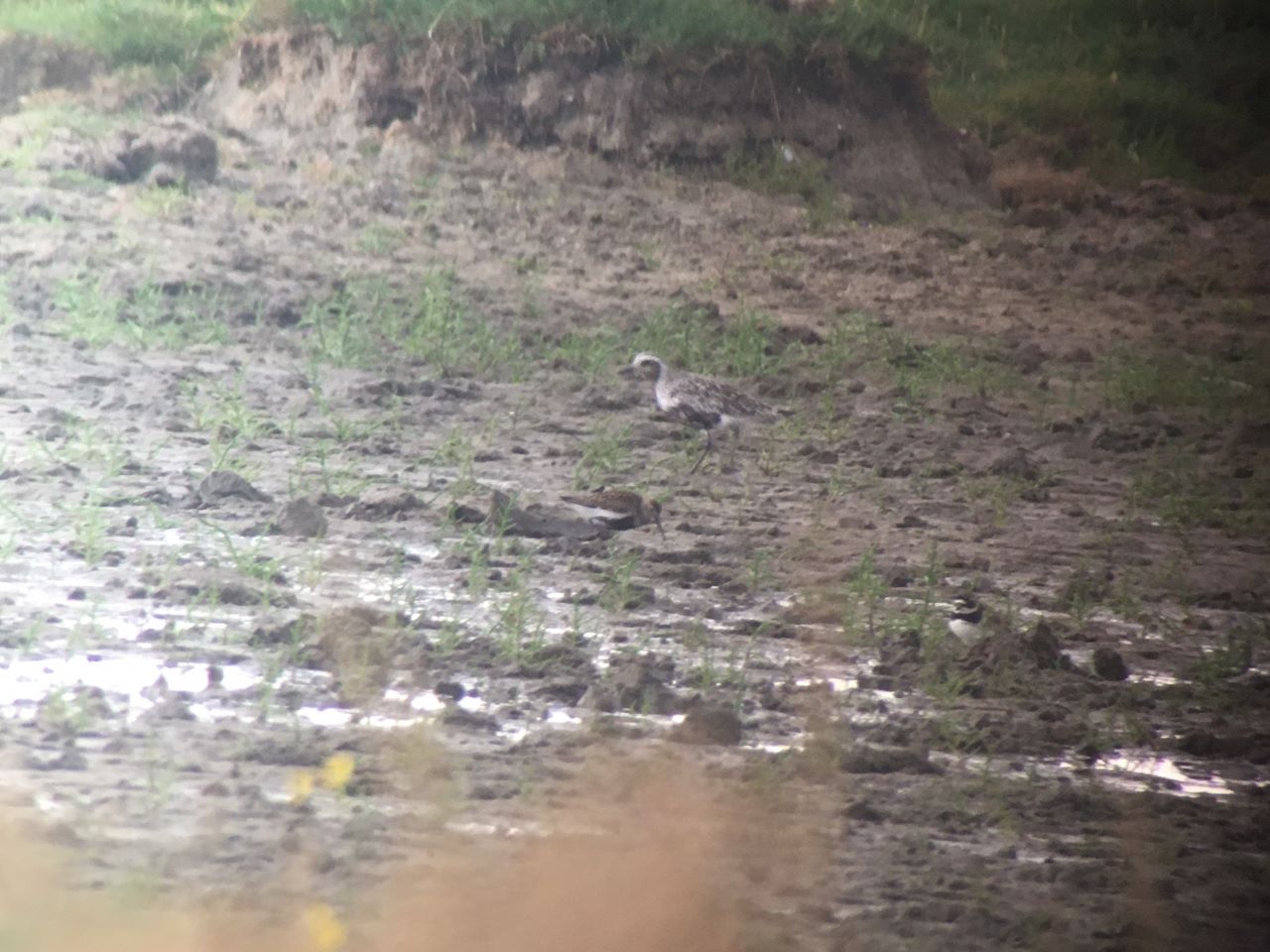
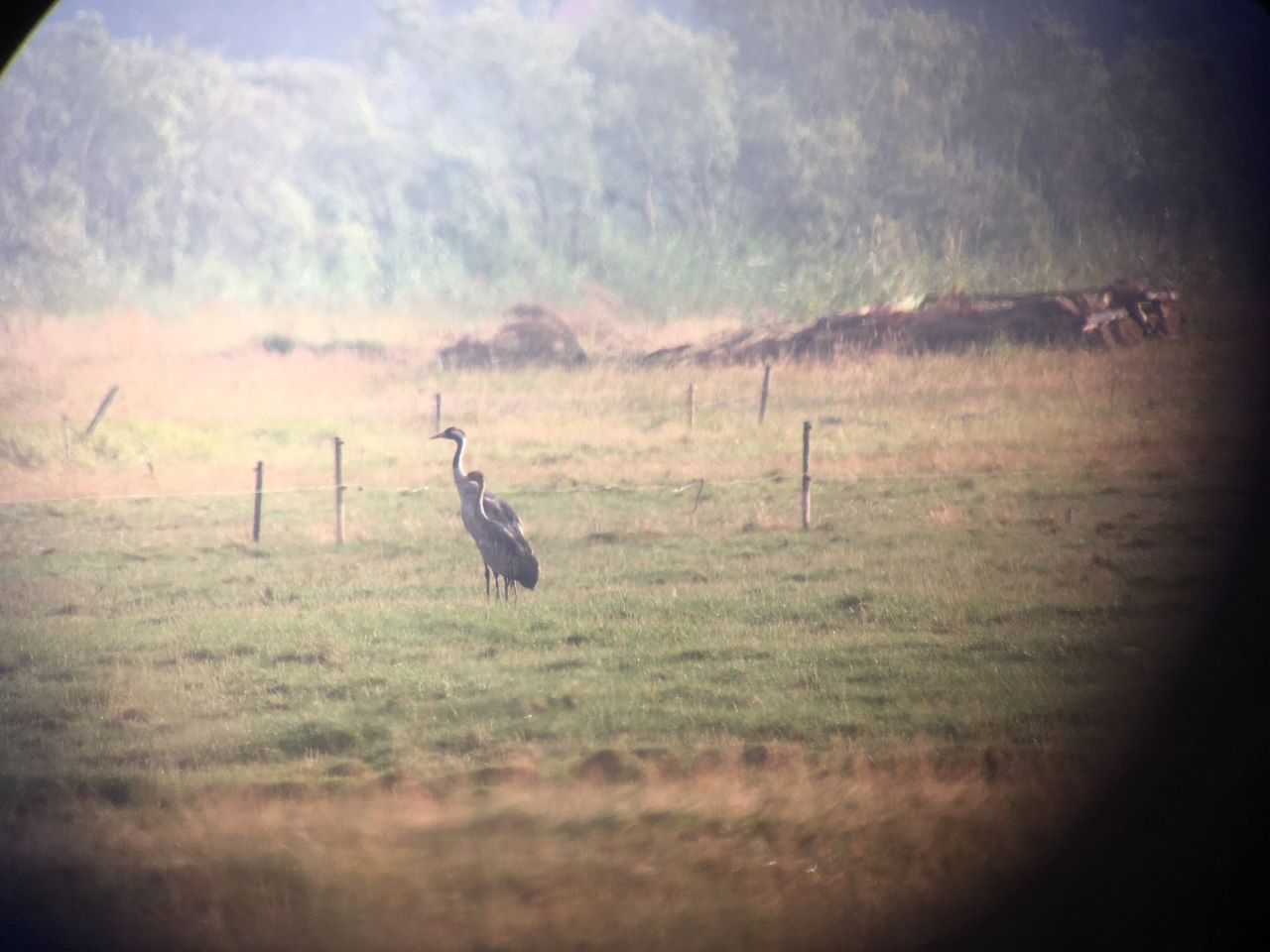
Also, to make it a perfect day, we got rained on yet again, but the light after the rain was just amazing. I guess, it was exactly that which makes this area so famous for painters.
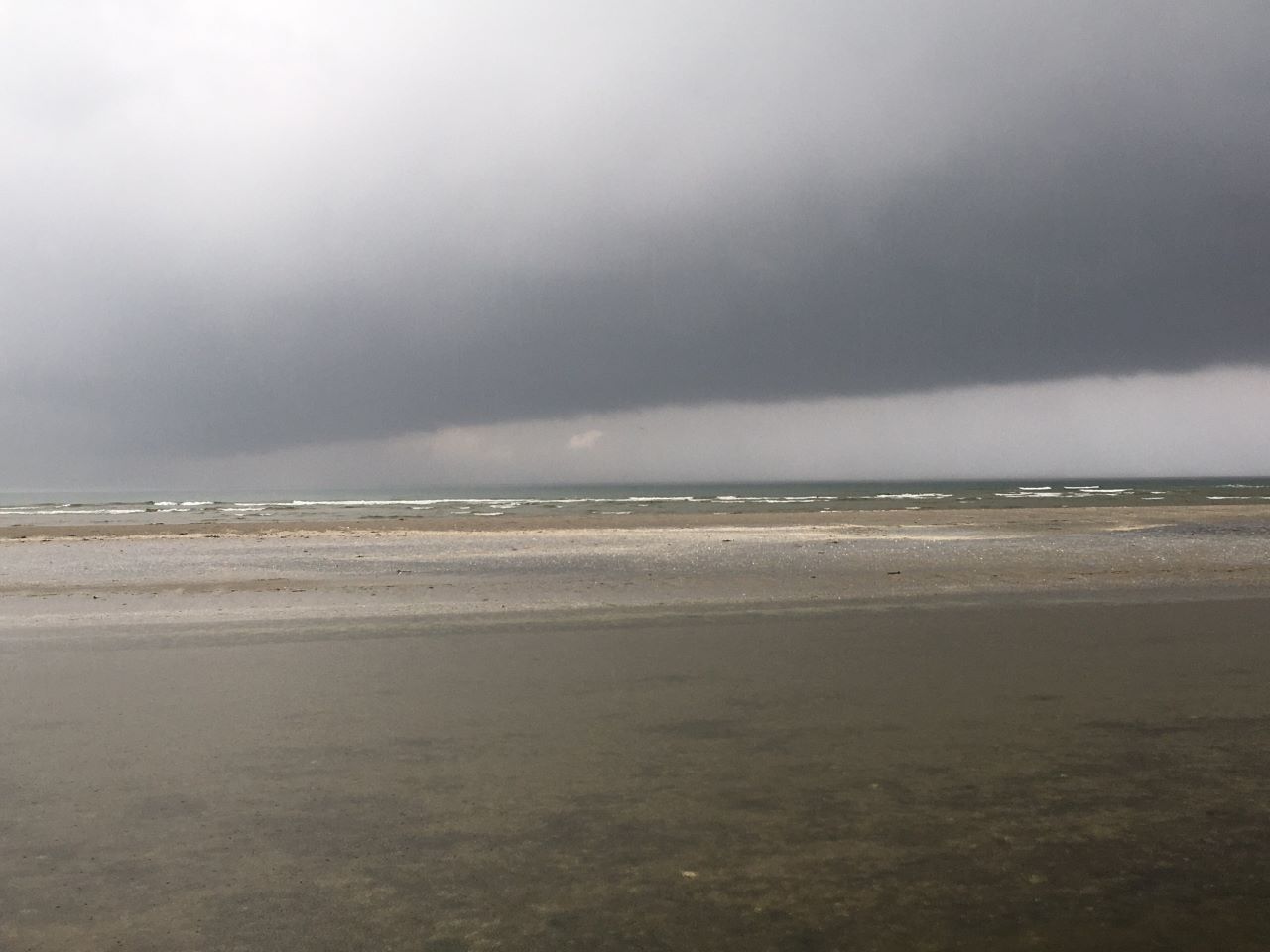
Ringing at Kabeltrommlen:
Kærsanger (Marsh Warbler) 1
Rørsanger (Reed Warbler) 1
Tornsanger (Common Whitehtroat) 2
Munk (Blackcap) 1
Karmindompap (Rosefinch) 2
Total 7
Local observations of the day in DOFBasen
People: Rita DeLucco, Alice Scalzo, Nathan Delmas, Max Laubstein, Martina Hillbrand, Knud Pedersen, and our guests Margit and Jesper.
They are coming back to Skagen !
Hello everyone !
Like yesterday, today was a slow day for birds; but some nice divers (great and black throated) were spotted by Max, Alice and Erik.
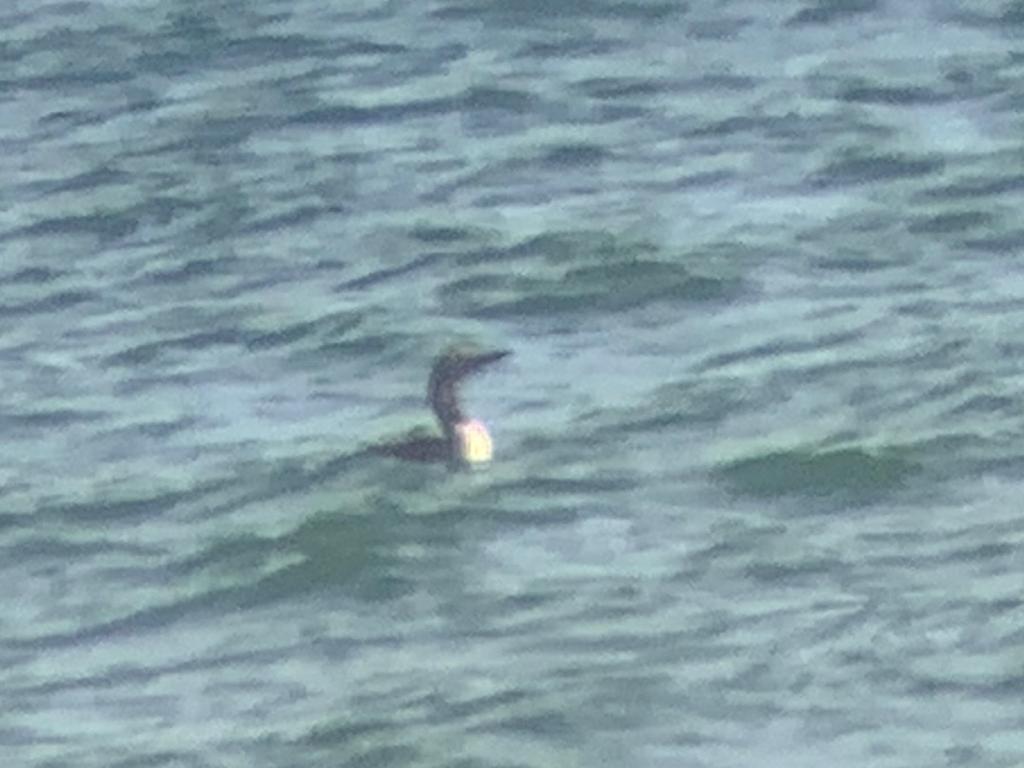
Amazing high quality picture of a black-throated diver taken by Max
Another clutch of ring plovers has also been sighted on the beach and we are looking forward to ringing them !
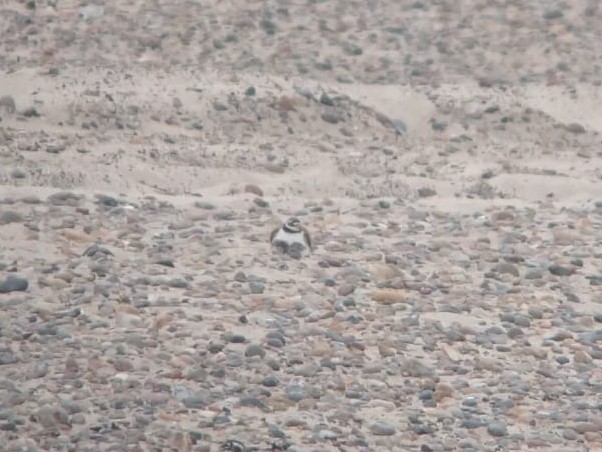
4 ring plover chicks seeking shelter under their parent (Photo taken by Alice)
When it comes to the ringing, we had few birds in quantity but 10 different species in the nets which is always enjoyable. On the way back to the light house, Martina spotted the Crested Lark near the parking lot near the dunes.
Later in the day, Alice went with Jørgen Kabel to see a Polygonia C-album; it only has been observed a couple of times in Skagen !
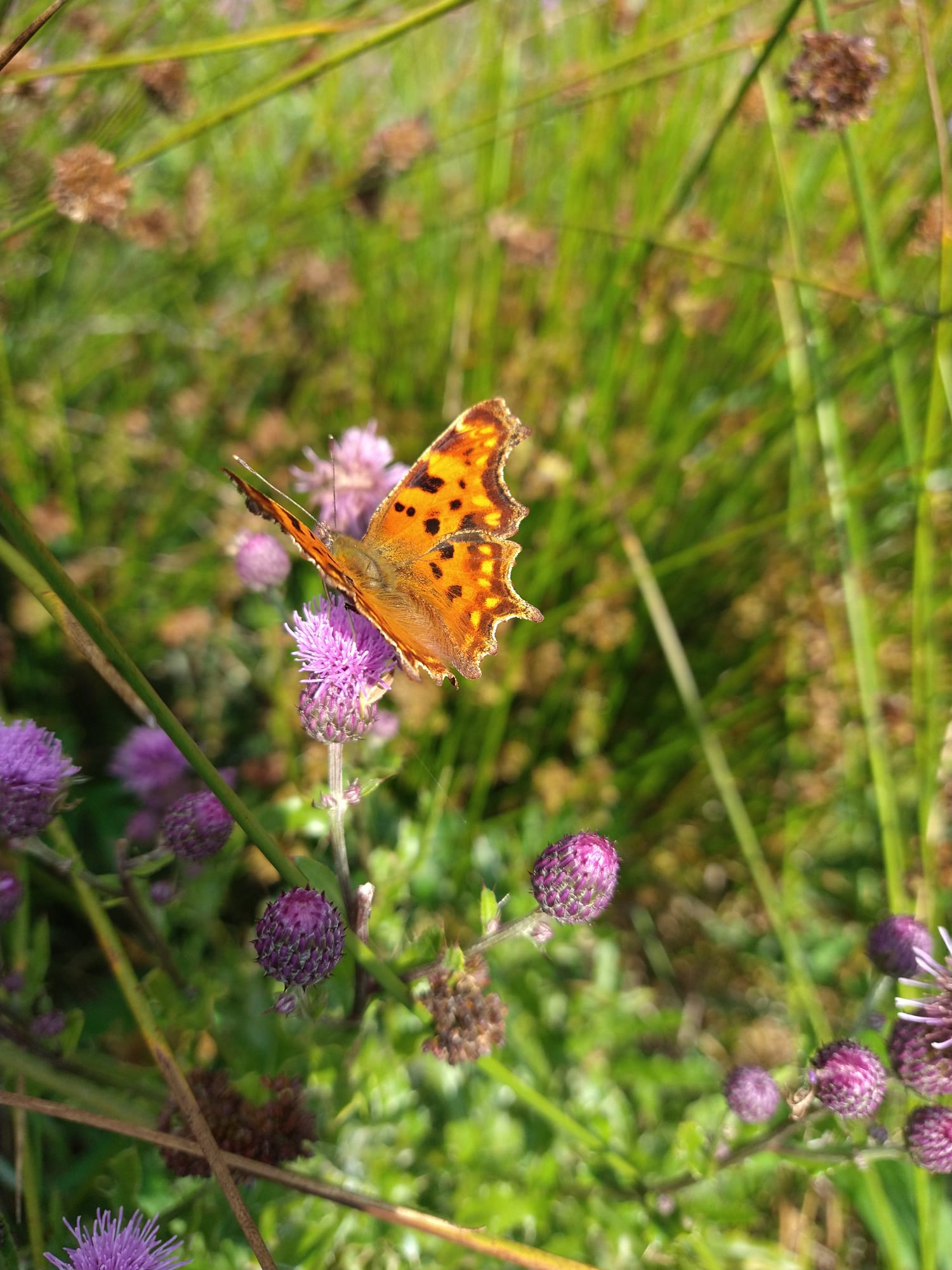
Polygonia C-album taken by Alice
Tonight, Max and Martina are going to do some night catching on the beach and we all wish them good luck !
That is all for today folks !
See you tomorrow
Nathan Delmas
Ringing Totals:
Common Chiffchaff / Gransanger : 1
Sedge Warbler / Sivsanger : 1
Willow Warbler / Løvsanger : 1
Chaffinch / Bogfinke : 1
Yellow Hammer / Gulspurv : 2
Lesser Redpoll / Gråsisken : 1
Great Tit / Musvit : 2
Common Whitethroat / Tornsanger : 6
Reed Bunting / Rørspurv : 2
Eurasian Blackcap / Munk : 1
Total : 18
Local observations of the day in DOFBasen
Cutting Net Lanes
Greetings!
Unfortunately, there is not much to report on the bird front today. While the past few days have been quite productive for ringing and seawatching (our two main fieldwork projects for the autumn), today was an exception. Overnight and throughout the day it's been quite cloudy, and for southbound migratory birds coming from Norway, Sweden, and perhaps elsewhere, making the flight across the Kattegat or Skagerrak in a dense grey fog with no visibility is far from preferable. Hence, few migrants arrived here in Skagen; Rita and Nathan reported a very inactive seawatch at World's End 3, and Martina, Alice, and I had a similarly slow day of ringing with 17 birds, the highlights being 2 Icterine Warblers (Gulbug) and 1 Reed Bunting (Rørspurv). However, days like today are fascinating displays of the relevance of weather conditions to bird migration, and truly, a day can never even be considered mediocre when there's birds involved!
After their seawatch, Rita and Nathan went into town (while Martina, Alice, and I rested) to do some grocery shopping and search for the continuing Little Auk "Søkonge" in the Skagen harbor. This bird was found a few days ago by local birders, and is quite a rarity for the summer! Little Auks breed in large colonies on islands in the North Atlantic within the arctic circle, including Greenland, Svalbard, Jan Mayen, Franz Joseph Land, and Novaya Zemyla among others (though there are some small colonies known in the extreme North Pacific in the Bering Strait). They regularly spend their winters in the waters surrounding Skagen, so in general they're not a rarity, but it's the time of year that makes this individual interesting, Perhaps this bird migrated prematurely, or got lost while on a foraging foray, but what's for certain is that this bird is behaving strange. After a short search, Rita and Nathan found the auk, and were surprised to find it approach within a few meters of them, allowing wonderful views and photo opportunities.
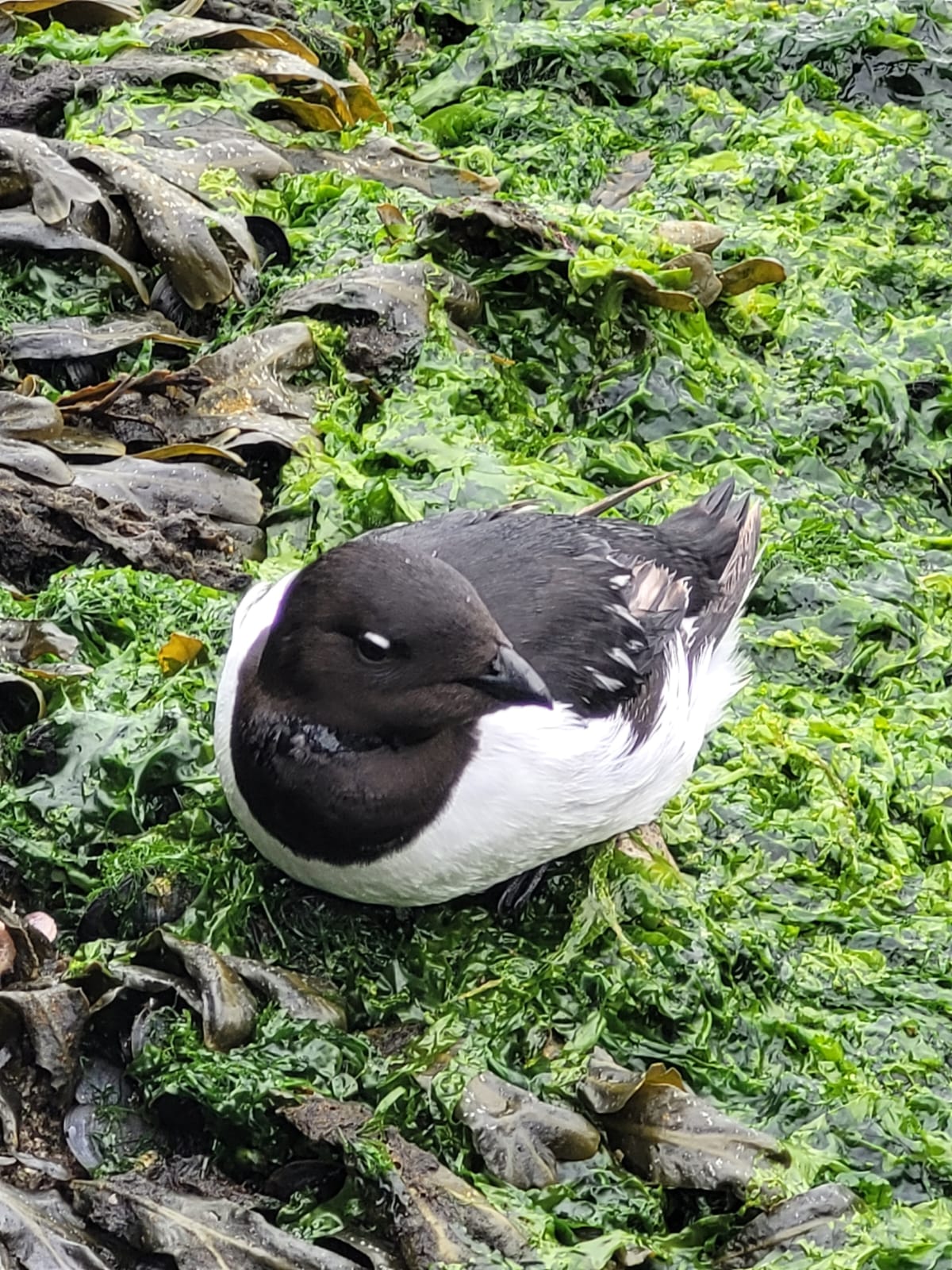
Little Auk (Søkonge). Photo by Nathan
Later in the afternoon, Knud Pedersen drove Martina, Nathan, and I to Nordstrand so we could walk to the nearby Cormorant "Skarv" Lake to finish clearing lanes for mist nets at at a new CES ringing site. CES, which stands for "Constant Effort Sites," is a standardized bird ringing program which seeks to regularly ring birds at the same site every year through the breeding season. The data collected from CES ringing is incredibly valuable for estimating the survivorship and reproductive output of local bird populations, and documenting changes in those variables over time. After several hours of hard work, mosquito bites, and water logged boots, we finished cutting all of the net lanes, and are excited to begin ringing at this site next year!
Cheers!
Max
Ringing Totals:
Common Chiffchaff / Gransanger : 2
Great Tit / Musvit : 2
Common Whitethroat / Tornsanger : 5
Reed Bunting / Rørspurv : 1
Eurasian Blackcap / Munk : 2
Lesser Whitethroat / Gaerdesanger : 1
Reed Warbler / Rørsanger : 1
Icterine Warbler / Gulbug : 2
Marsh Warbler / Kaersanger : 1
Total : 17
Local observations of the day in DOFBasen
Favorable winds
This morning had been very good for both the ringing and observations teams. The weather did not look promising at first with the sky completely covered in clouds, but it didn't stop the birds from coming. Martina, Rita, and Nathan, were at the ringing and enjoyed the lucky captures of not one but two Green sandpipers (Svaleklire), and one Red-backed Shrike (Rødrygget Tornskade). It was the first time for Nathan and Rita to get these species in the nets.
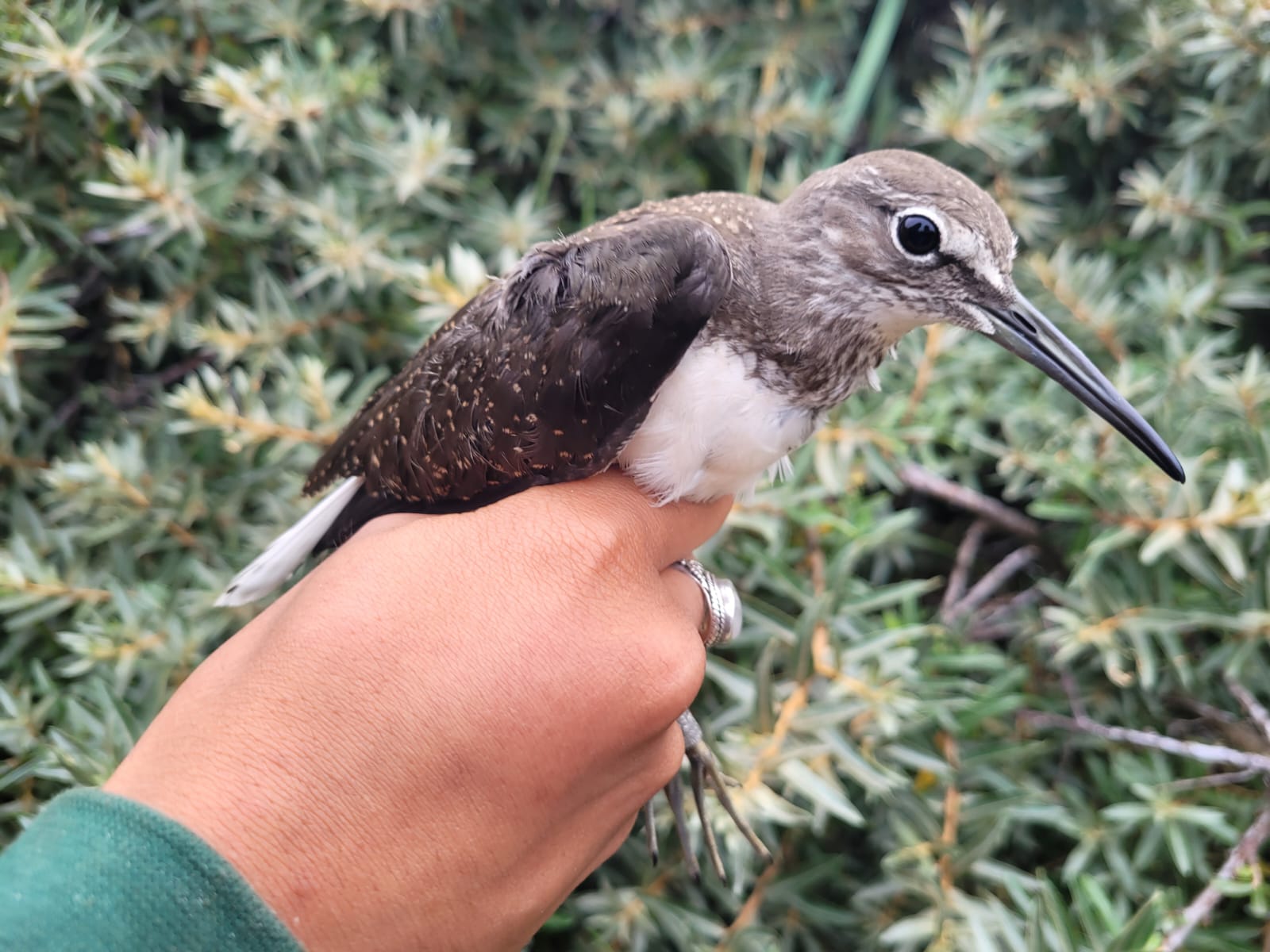 Green sandpiper, picture from Nathan
Green sandpiper, picture from Nathan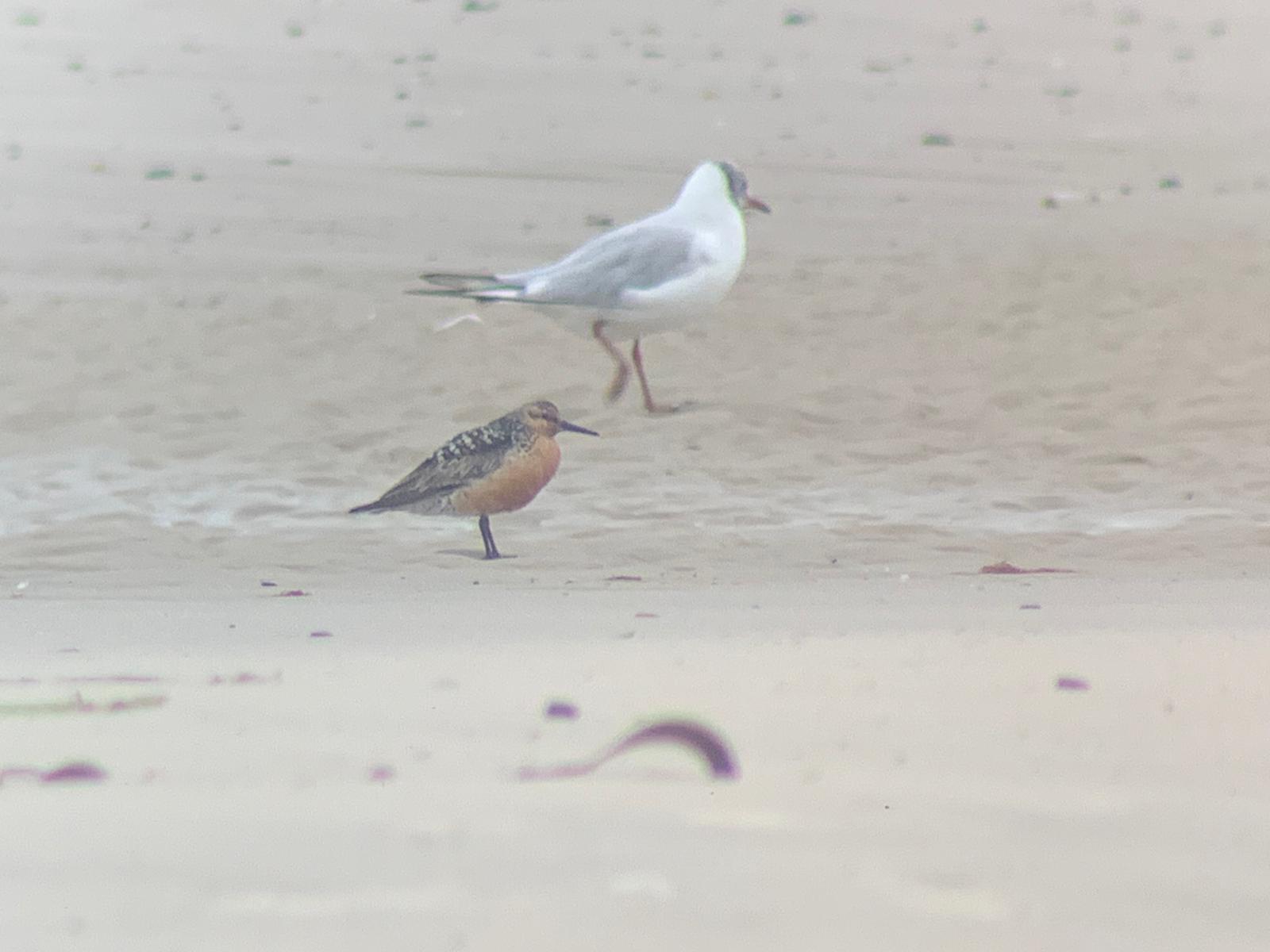 Red Knot, picture from Max
Red Knot, picture from MaxSnake Bird and Mist Nets
Early this morning while Nathan and I were doing our daily migration counts, we received an exciting message from the ringing team up at KAB. The team composed of Martina, Max, and Alice had caught something extra special in their mist nets, a wryneck (Vendehals), a first for many of us. The wryneck is part of the woodpecker family and is capable of doing extraordinarily strange movements with its neck. It is said that the movements the bird exhibits are a threat display to scare away predators. In fact, they can turn their head nearly 180 degrees and the snake-like movement has given them the nickname of ‘’snake bird’’ in parts of the world.
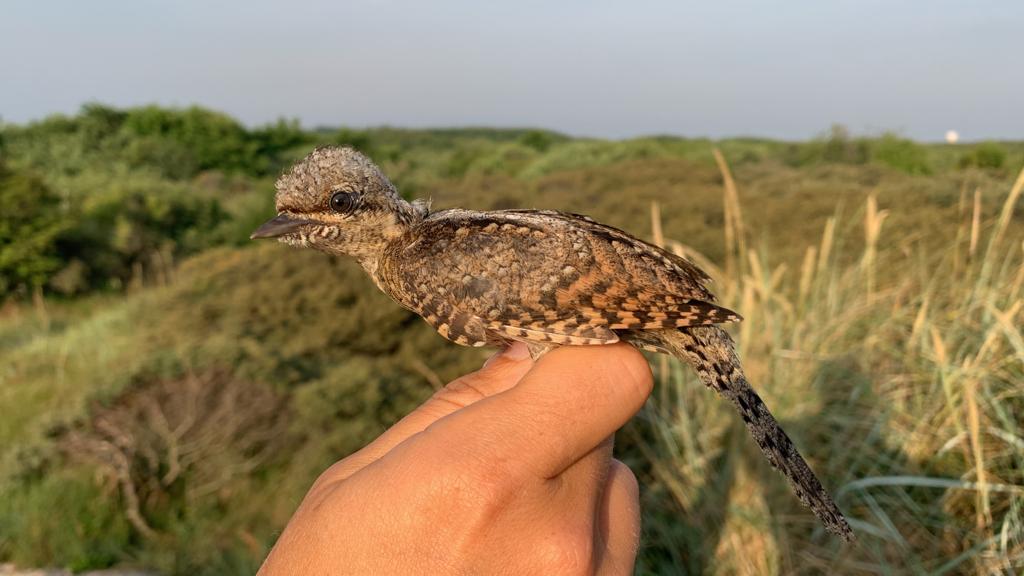
Wryneck (Vendehals), Photo Credit: Max Laubstein
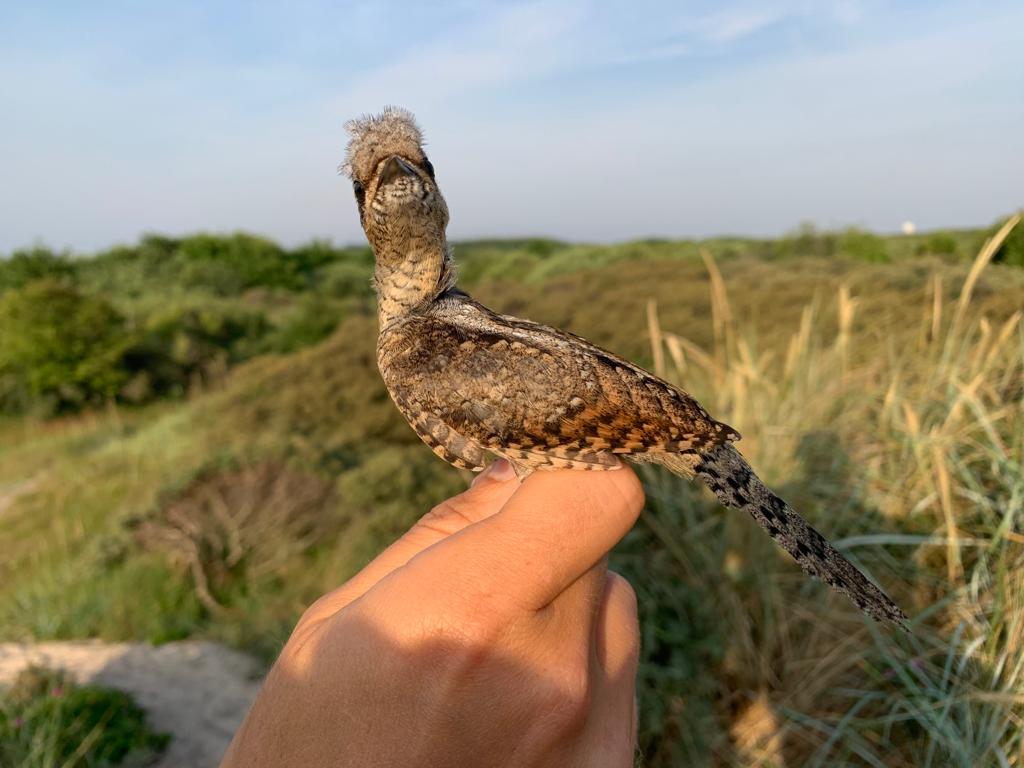
Wryneck (Vendehals), Photo Credit: Max Laubstein
While Nathan rushed to catch a glimpse of the bird and take the necessary photographs after it had been rung, I caught three Common Kestrels (Tårnfalk) in my scope down by the beach. Much to my delight, the juvenile was practicing its flying abilities in the dunes and I was briefly able to watch it hone its skills. Over the course of the morning, over 20 individuals of the species were recorded in the area, perched on trees, flying above, and practicing the skills necessary to become an efficient predator.
In the early afternoon, Knud was kind enough to drive our team to the cormorant lake to begin the arduous but necessary task of creating new mist net lanes. Although it will take many days to complete the task and the location seems to be yet another favorite for mosquitoes, many bird species were heard over the course of the activity further confirming the potential of the location for future bird ringing. The location's proximity to a lake combined with a terrain compromising of dunes and reeds is prime habitat for many passerine species, it is, therefore, our hope that new nets at the location will enable us to continue the important work conducted by the Skagen Fuglestation in the form of ringing and data collection.
Local observations of the day in DOFBasen
Ringing at Kabeltrommlen:
Vendehals (Wryneck): 1
Gråsisken (Redpoll): 1
Rørsanger (Reed Warbler): 3
Gærdesmutte (Wren): 1
Gærdesanger (Lesser Whitethroat): 3
Kærsanger (Marsh Warbler): 2
Tornsanger (Common Whitethroat): 17
Dompap, lille (Bullfinch): 1
Sivsanger (Sedge Warbler): 1
Løvsanger (Willow Warbler): 4
Sortmejse (Coal Tit): 2
Havesanger (Garden Warbler): 1
Munk (Blackcap): 2
Blåmejse (Blue Tit): 4
Rørspurv (Reed Bunting): 1
Gransanger (Chiffchaff): 6
total: 50
People: Rita DeLucco, Alice Scalzo, Nathan Delmas, Max Laubstein, Martina Hillbrand, Knud Pedersen
Mosuitos and birds
As ancient ringer’s wisdom says: where there are mosquitos, there are birds. We had a lot of mosquitos today probably due to the changed weather conditions and we had quite a few birds too in the ringing. Since Alice, Nathan and Rita took today off in order to explore a natural area (Lille Vildmoos) further south, it was only me and Max at the ringing today. Luckily, we were helped out by former volunteer Frederik who is staying in Skagen on vacation at the moment with family. We had a couple net checks where we were quite happy to have his help! Like other days, today has been quite windy, however, over night the winds have turned from west to south which made everything just a little different.
We were not overwhelmed with birds nor were there any other species than what we are used to by now, save the robin (rødhals) which appeared in the nets to remind us that winter is not that far away.
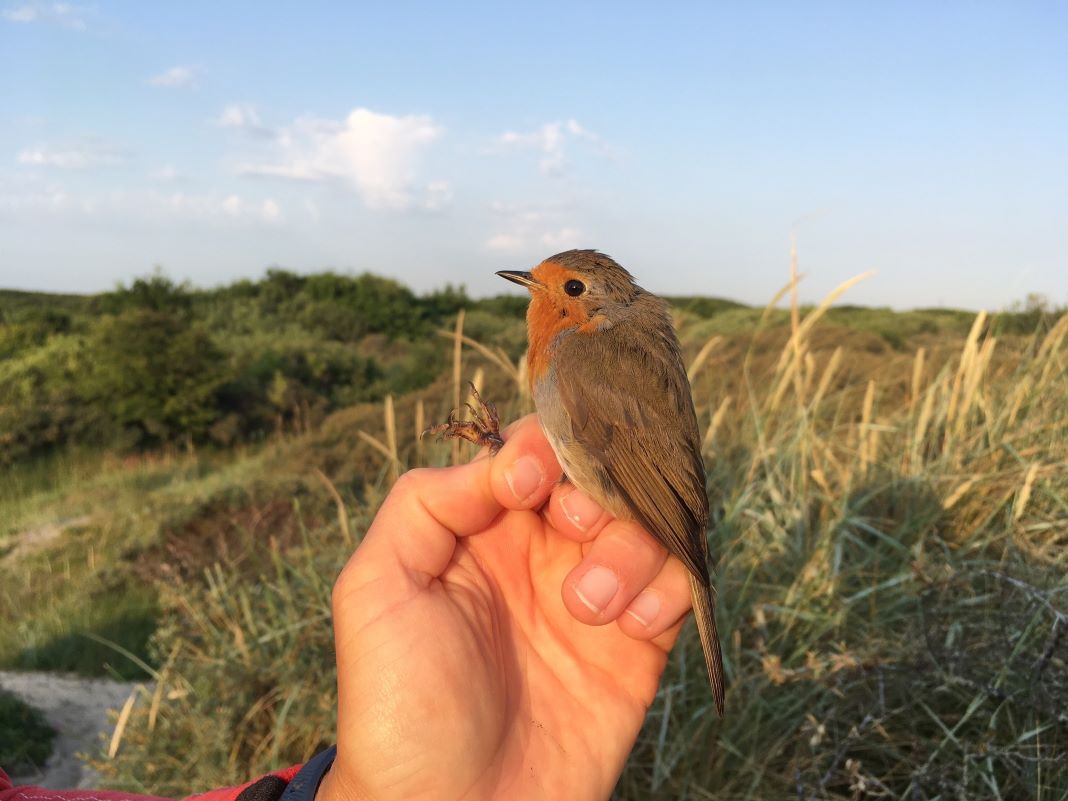
We also had a juvenile bearded reedling (skægmejse) which was quite a treat, another one calling from the reeds. All of them are probably local birds, though. Migration is still very slow but the fact that we catch a lot of common whitethroats (tornsanger) and very few of them are ringed now also means that we can get a rather good impression of how big the population really has to be. And I am glad to announce that it is big. Of course, there are big variations between years but this year seems to be rather good for common whitethroat, as other years have been particularly good for blackcaps (munk). And Whitethroats are pretty, like this adult male shows:
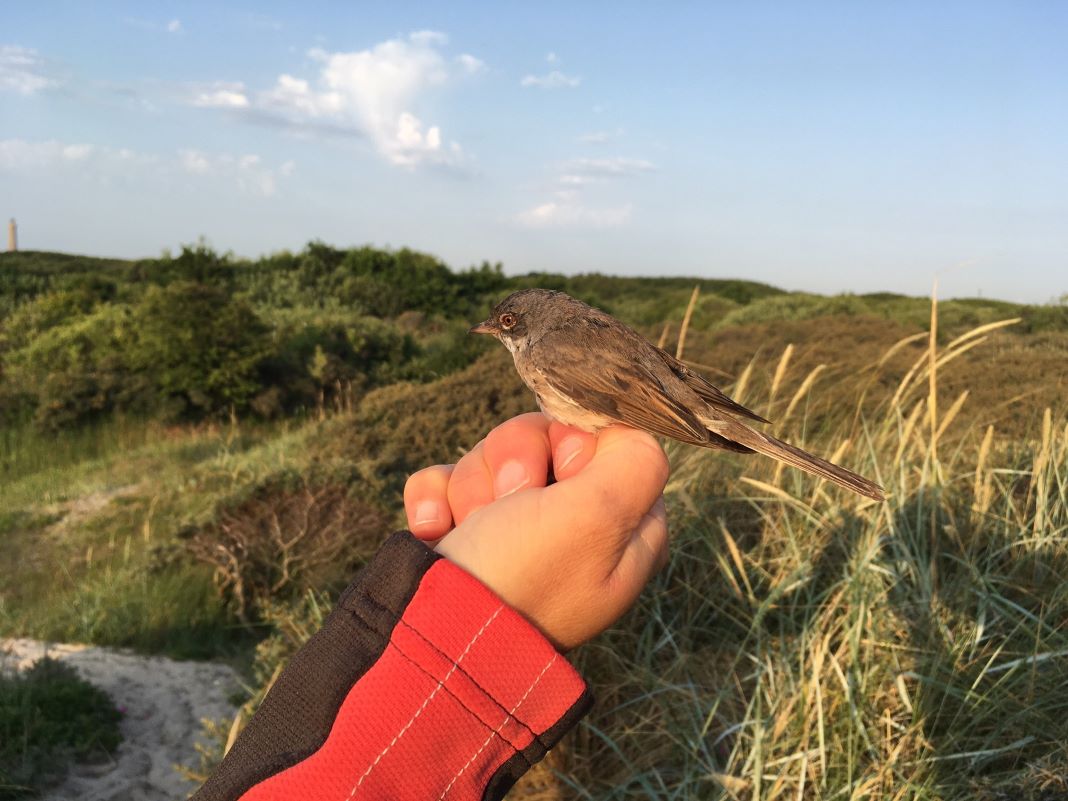
Apart from birds it was a very nice morning in nice weather out at Kabeltromlen, hanging out with nice people, catching up with old friends and eating ‘rundstykker’, that a visitor kindly brought to introduce us to traditional Danish breakfast.
The rest of the crew had a fantastic day at the Lille Vildmoos and they managed to see moose which was one of their goals:

Local observations of the day in DOFBasen
Ringing at Kabeltromlen:
Solsort (Blackbird) 2
Rødhals (Robin) 1
Løvsanger (Willow Warbler) 2
Gransanger (Chiffchaff) 6
Rørsanger (Reed Warbler) 3
Kærsanger (Marsh Warbler) 2
Gulbug (Icterine Warbler) 1
Gærdesanger (Lesser Whitethroat) 1
Tornsanger (Common Whitethroat) 16
Munk (Blackcap) 6
Musvit (Great Tit) 2
Skægmejse (Bearded Reedling) 1
Rørspurv (Reed Bunting) 1
Total: 44
People: Rita DeLucco, Alice Scalzo, Nathan Delmas, Max Laubstein, Martina Hillbrand, Frederik Johansen, and our guests Iben and Olivia.
